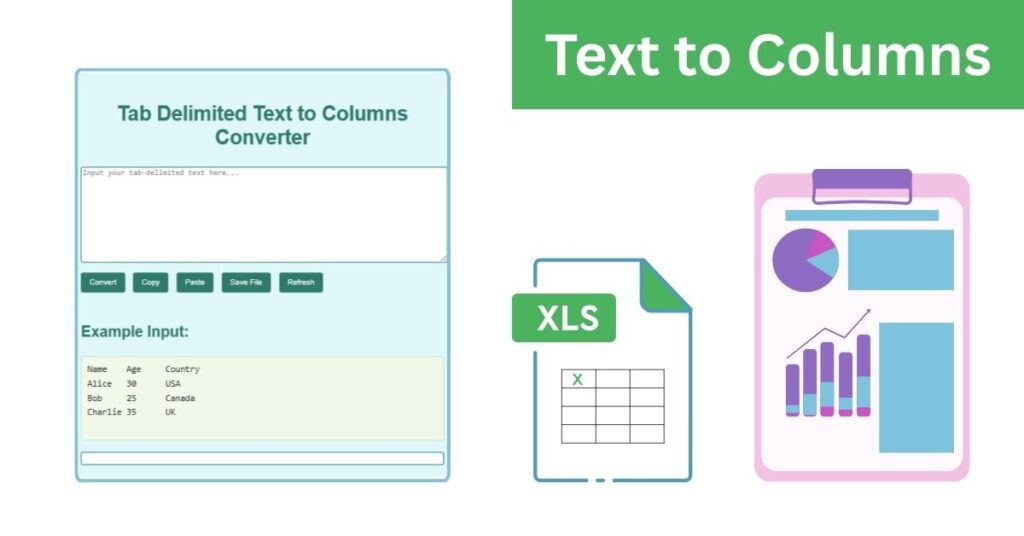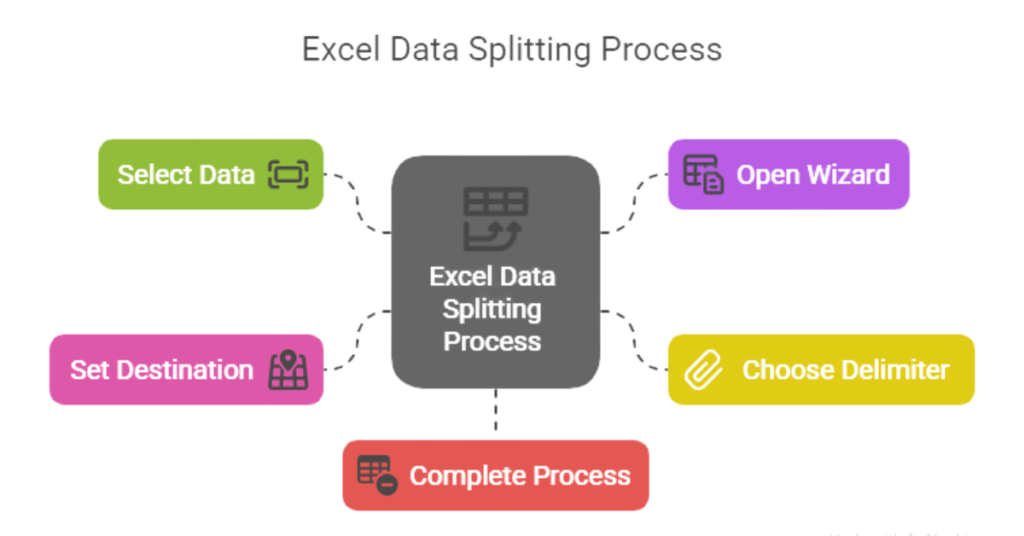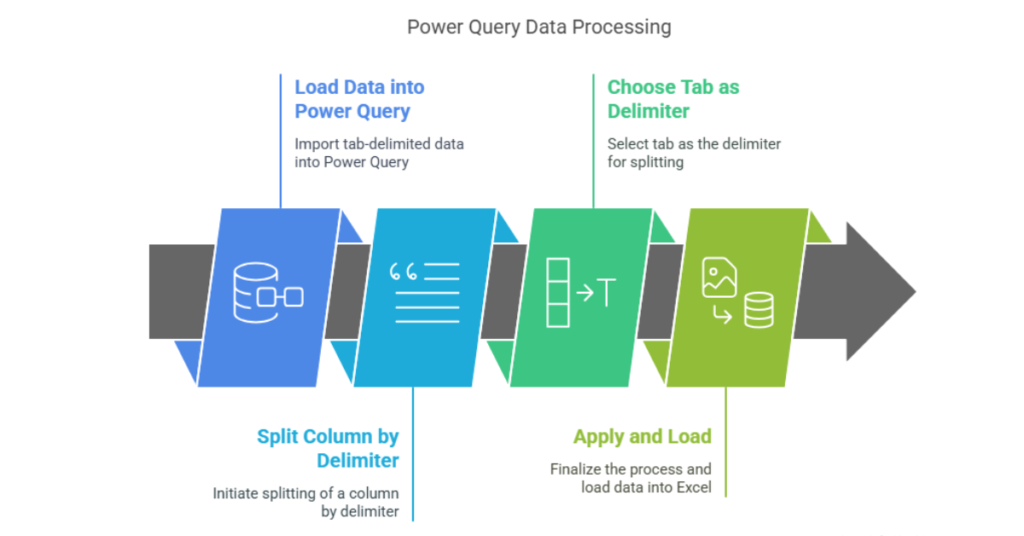Tab Delimited Text to Columns Converter
Example Input:
Name Age Country
Alice 30 USA
Bob 25 Canada
Charlie 35 UK
Table of Contents
What is Tab Delimited Text?
Tab delimited text is a plain text format where each field of data is separated by a tab character. Many data exports from software systems or reports use this format. Each line represents a row, and tabs separate the values into columns.

Why Convert Tab Delimited Text into Columns?
When you paste tab delimited data into Excel, it may appear in one column. Converting it into separate columns improves readability and allows for better analysis, filtering, and sorting. This is especially useful for developers, analysts, and IT professionals who work with structured data.

Method 1 – Use Tab Delimited Text to Columns in Excel
Step-by-Step Instructions
- Select the Data
Select the column that contains the tab delimited text. - Open the Text to Columns Wizard
Go to the Data tab on the Excel ribbon. Click Text to Columns. - Choose Delimited Option
In the wizard, select Delimited and click Next. - Set Tab as Delimiter
Check the box for Tab. Uncheck any other delimiter options like Comma or Space. Click Next. - Select Destination Cell
Choose where to place the split data. By default, it replaces the selected column. To keep the original, choose a new column. - Finish the Process
Click Finish. Excel now splits the data into separate columns.
This method is quick and works well for small to medium datasets (Microsoft Support).

Method 2 – Use Power Query for Large or Dynamic Data
Why Use Power Query?
Power Query is useful when working with large datasets or when you need to repeat the process. It provides more control and automation.
Steps to Use Power Query
- Load Data into Power Query
Select your tab delimited data or import the text file. Go to the Data tab and click From Table/Range or From Text/CSV. - Split Column by Delimiter
In Power Query Editor, select the column. Click Split Column > By Delimiter. - Choose Tab as Delimiter
In the dropdown, select Tab. Confirm the split method as Each occurrence of the delimiter. - Apply and Load
Click Close & Load. The data appears in Excel, split into columns.
This method is ideal for repeating tasks or connecting to external data sources (ExcelDemy).
Method 3 – VBA Macro for Custom Automation
When to Use VBA
Use VBA when you need to automate the process for multiple sheets or files.
Sample VBA Code
vba
Sub SplitTabDelimited()
Dim rng As Range
Set rng = Selection
rng.TextToColumns Destination:=rng, DataType:=xlDelimited, _ TextQualifier:=xlDoubleQuote, ConsecutiveDelimiter:=False, _ Tab:=True
End Sub
How to Use Tab Delimited Text to Columns
- Press ALT + F11 to open the VBA editor.
- Insert a Module and paste the code.
- Close the editor.
- Select the data and run the macro.
This method saves time if you process tab delimited text often (ExcelDemy).
Common Issues and Fixes
All Data in One Column
If your pasted text ends up in one column, Excel may not detect the tab delimiter. Use the Text to Columns wizard to fix this.
Wrong Delimiter Used
Ensure only Tab is selected in the delimiter list. Uncheck others like Comma or Space to prevent incorrect splitting.
Data Overwriting
Choose a destination column that does not overlap with the original data to avoid overwriting.
Best Practices for CSE Professionals
- Always back up your data before running Text to Columns or macros.
- Use Power Query when working with real-time or external data feeds.
- Automate with VBA when handling repetitive tasks across files.
- Document your steps for reproducibility and team sharing.
Use Tab Delimited Text to Columns in IT Sector
- Log File Processing: Split exported log entries for filtering.
- Database Exports: Convert structured exports into readable Excel sheets.
- Script Output Review: Analyze script-generated tab delimited reports.
Conclusion
Tab delimited text to columns conversion is a vital skill for data processing in Excel. Whether using the built-in wizard, Power Query, or VBA, each method serves different professional needs. For CSE engineers and IT professionals, mastering these tools ensures cleaner data and more efficient workflows. Use the right approach based on your data size, frequency of use, and automation needs.